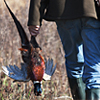National Wildlife Refuge System Improvement Act, Vermont Packinghouse, Aiken County Animal Shelter (ACAS), Sumatran rhino, Galapagos giant tortoise, Animal Welfare, Bandung Zoo, Animal Crimes, Animal Cruelty, League Against Cruel Sports & Much More to report this week!
Keeping Wildlife First in Our National Wildlife Refuge System
Celebrating America’s Wildlife Refuges on the 20th Anniversary of the National Wildlife Refuge System Improvement Act
In 1903, President Theodore “Teddy” Roosevelt established Pelican Island as our nation’s first wildlife refuge. Roosevelt was famously concerned about the potential extirpation of resident brown pelicans whose plumage fetched top dollar in the fashion industry of the day—and he was determined to do something about it.
What began as one act to preserve the inherent value of wildlife and the beauty of nature quickly burgeoned into a bit of an obsession for Roosevelt. Over the next six years of his presidency, he set aside more than 50 refuge units and his actions inspired Congress to follow suit.
But even as this nascent network of conservation lands and waters grew over the succeeding decades, it lacked a guiding mission to unify and strengthen the collection of habitat designations. The Refuge System was a “system” in name only, without a foundational statute articulating policy direction and management standards to govern the system or individual refuge units. Without an “organic act,” special interests ran roughshod over the Refuge System, pressuring managers to allow every manner of land use and development on refuges to the detriment of the wildlife and habitat they were established to protect.
Congress needed to do something.
A System under Siege
The National Wildlife Refuge System we know today emerged gradually. Legislators first passed the Refuge Recreation Act of 1962 to authorize and fund refuge compatible recreation in response to growing public demand for these opportunities. Then in 1966, Congress passed the National Wildlife Refuge System Administration Act to help unify management of the system.
While both acts advanced important concepts for administering wildlife refuges, neither was sufficient to stem the misuse and abuse of refuges nationwide. And it got ugly. Oil and gas drilling, mining, agriculture, livestock grazing and high-impact recreation such as jet skiing and off-road vehicle use plagued refuges across the country. By the 1990s, more than 300 refuge units – over 60 percent of the System – were being subjected to harmful activities, putting species at risk and damaging rare and sensitive habitats.
Putting Wildlife First
The Refuge System finally received the clear direction it needed on October 9, 1997. The National Wildlife Refuge System Improvement Act, passed with overwhelming bipartisan support, amended the Refuge Administration Act and provided an overarching mission and clear management direction for the entire Refuge System:
“The mission of the System is to administer a national network of lands and waters for the conservation, management, and where appropriate, restoration of the fish, wildlife, and plant resources and their habitats within the United States for the benefit of present and future generations of Americans.”
The Refuge Improvement Act put wildlife first on national wildlife refuges, a precept that had never before been codified in law. It fundamentally strengthened the Refuge System, requiring the Secretary of the Interior to maintain the biological integrity, diversity and environmental health of these public lands and waters. The new statute specifically mandated that all refuge uses be compatible with the primary purpose of the individual refuge and the wildlife conservation mission of the system. It insulated refuge managers from political pressure, empowering them to ensure that all refuge activities — even wildlife-dependent priority public uses like wildlife observation, environmental education, hunting and fishing — are consistent with wildlife stewardship objectives.
Properly implemented and adequately funded, the Refuge Improvement Act works brilliantly. But even as we celebrate its twentieth anniversary, we’re fighting to preserve both the law and our system of wildlife refuges.
Here We Go Again
Driven by special interests, the Trump administration and misguided members of Congress are bent on selling out our refuges for private gain, threatening decades of progress we’ve made to protect and restore our nation’s only system of lands and waters dedicated to wildlife conservation.
Budget proposals in both the House of Representatives and the Senate would pave the way for drilling in the iconic Arctic National Wildlife Refuge. The “SHARE” Act, a bill in the House, would recklessly waive environmental review for all management activities across the Refuge System. And a few fringe legislators want to give away wilderness wetlands in Izembek National Wildlife Refuge in order to plow a destructive and unnecessary road through this internationally recognized reserve. The litany of Congressional attacks goes on.
Not to be outdone, last month the Washington Post revealed that the Trump administration is making illegal plans to authorize seismic exploration in the Arctic Refuge, the first step toward oil development in one of our nation’s last great wild places. This cynical attempt follows on months of administrative attacks on the Refuge System, from the concocted “review” of our marine national monuments with the intent of downsizing and reducing protections for these vital refuge units, to foolish and wasteful bids to build a border wall that would bisect numerous borderland refuges.
Let’s Not Go There Again
Our Refuge System is unrivaled in the world, comprising more than 850 million acres of wildlife habitat that supports more than 8,000 species of mammals, birds, reptiles, amphibians, fish and marine life and at least 380 threatened and endangered species of plants and animals. The System provides innumerable recreational and educational opportunities, supports more than 35,000 jobs and generates billions of dollars in local sustainable economic revenue.
But those entrusted with the responsibility to steward this unparalleled network of public lands and waters have careened far off course. Between the proliferation of legislative attacks and executive misdirection, Congress and the Trump administration have put the entire Refuge System – and the future of wildlife conservation in the United States—in jeopardy.
We cannot go back to the days of unruly, unregulated exploitation and abuse of our Refuge System. The Refuge Improvement Act was enacted for a reason – to make good on Teddy Roosevelt’s legacy and manage refuges first for wildlife. We must maintain the biological integrity, diversity and environmental health of the Refuge System as mandated by its cornerstone law and continue to protect, strengthen and grow this incredible network of conservation lands.
Follow Defenders of Wildlife on social media to stay up-to-date on the latest developments concerning wildlife from Capitol Hill and other news important our work. Don’t forget to sign up for our emails where you will get all the latest news and action alerts to support wildlife.
Due to a life-changing event, the Blackwell family had to make the hardest decision a pet owner can make — to give up their beloved pets. For two months, they tried to find Tux and Bruiser a new home — Craiglist, Facebook — nothing seemed to work. Finally, they thought that placing them in a shelter was their last, best hope at finding a new home.
What they didn't know, was within hours Tux and Bruiser would be dead.
Aiken County Animal Shelter (ACAS) didn't wait two shakes of a dog's tail before they euthanized the surrendered pups.
Aiken County Animal Shelter puts received animals in three different categories; lost with identification, lost unidentified, and surrendered. The category determines how long the animals have to live before they are euthanized if they are not rehomed. Those lost with identification have at least two weeks, while lost unidentified animals get five days, but for those that are surrendered, euthanasia could happen immediately.
This policy needs to change now. Sign to make sure ACAS gives all animals a waiting period, no matter how they are received.
The Blackwells were heartbroken. They never thought that when they took their dogs to an animal shelter they were really taking them to their deaths.
Let’s tell ACAS that their policy is unacceptable. Join in demanding that they put a waiting period in place before considering euthanasia for all animals, including surrendered animals.
| ||||||
| ||||||

Please sign this Care2 petition to shut down this horrible, law-breaking Vermont slaughterhouse.
The media has exposed the Vermont Packinghouse again and again, but the authorities have responded with temporary closures and financial penalties that amount to a slap on the wrist.
Through incompetence and uncaring mismanagement, animals have been slaughtered in an inhumane fashion. The facility has even been fined for improperly stunning and butchering animals who were still conscious.
Please sign our petition demanding that Vermont's State Veterinarian and Attorney General shut down this slaughterhouse of horrors immediately.
|
Over 20 animals were reportedly found in unsanitary and cruel conditions without access to food or water. Dogs were found in rusty wire and plastic crates, some becoming so hungry that they apparently ate the plastic bars. Demand justice for these poor animals.
|
| |||||
| |||||
| |||||
| |||||
|
Please also help with these causes:
















